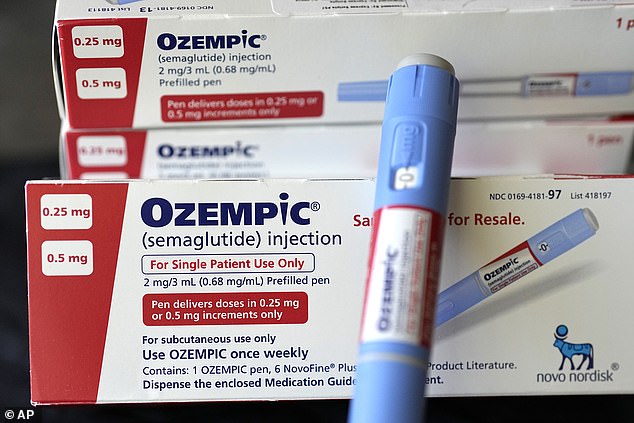Is the Ozempic craze pushing up the cost of health insurance? Employer-sponsored plans to undergo biggest increase in a decade – thanks to demand for expensive obesity drugs
Is the Ozempic craze driving up the cost of health insurance? Employer-sponsored plans will see the biggest increase in a decade – thanks to demand for expensive anti-obesity drugs
- The cost of employer-backed health insurance will rise 6.4% next year
- It comes amid growing demand for weight loss drugs, which can cost more than $1,000 a month
- It’s up to employers to decide whether to take the hit or pass on the higher costs to their employees
The cost of health insurance is expected to rise the most in a decade as prices are driven up by higher labor costs and growing demand for weight-loss drugs such as Ozempic.
The cost of employer-sponsored health insurance will rise 6.5 percent next year, according to figures obtained by the Wall Street Journal from consultancy firms Mercer and Willis Towers Watson (WTW).
Companies already pay an average of $14,600 per year per employee, making this one of the largest expenses for American companies.
Separate estimates from health care nonprofit KFF suggest that premiums for plans sold under the Affordable Care Act will also rise 6 percent, the report reports. WJ.
Hospitals are struggling under the weight of higher labor costs – thanks to rising nurses’ salaries – and the demand for expensive diabetes and obesity medications.
Hospitals are struggling under the weight of higher labor costs – thanks to rising nurses’ salaries – and the demand for expensive diabetes and obesity drugs
Ozempic and its sister drug Wegovy have seen a surge in popularity over the past year and have been linked to a host of celebrities, including Amy Schumer and Sharon Osbourne. A new competitor – Mounjaro – was also approved by the FDA last year.
But such drugs — injectable semaglutide designed to lower blood sugar levels — can cost hundreds of dollars a month.
Wegovy offers more than $1,300 for a 28-day supply, while Ozempic costs about $900 per month.
WTW previously estimated that a typical employer’s drug spending could increase by 50 percent if half of Wegovy-eligible employees used it.
Their popularity has resulted in a backlash from employers who are cautious about covering the drug in their plans.
According to a survey by the International Foundation of Employee Benefit Plans, fewer than 25 percent of companies will offer a drug specifically for weight loss.
The companies that do so are usually larger companies with more than 5,000 employees.
Jennifer Chang, knowledge advisor at the Society for Human Resource Management, previously told the newspaper WJ: ‘We are certainly at the beginning of the curve when it comes to the way insurers and healthcare institutions will approach this.’
Despite this, Debbie Ashford, of health consultant and brokerage Aon, warned that use is skyrocketing.

Ozempic and its sister drug Wegovy have seen a surge in popularity over the past year and have been linked to a host of celebrities, including Amy Schumer and Sharon Osbourne.
The premium increase marks a stark reversal after years of slow increases in health insurance costs, thanks to a lack of doctor and hospital visits during the pandemic.
The problem is exacerbated by higher labor costs: the average salary for a nurse increased by 4 percent in 2021 after the pandemic. Last year, the average wage of a registered nurse was $81,220, according to figures from the Bureau of Labor Statistics.
Hospitals are now winning price increases from insurers, creating a domino effect for employers.
WTW chief actuary Tim Stawicki explained WSJ: ‘The inflation we saw a year ago is finally making its way into the contracts. It’s like a delayed reaction.’
The company surveyed more than 450 U.S. employers between June and July and found that plans would increase by an average of 6.4 percent. This is the largest increase since 2012.
Companies will have to decide whether to take the hit out of their own pockets or increase the contributions they receive from employees’ paychecks for coverage.
The majority of employees will learn more about their 2023 occupational health plans during the annual enrollment period in the fall.
